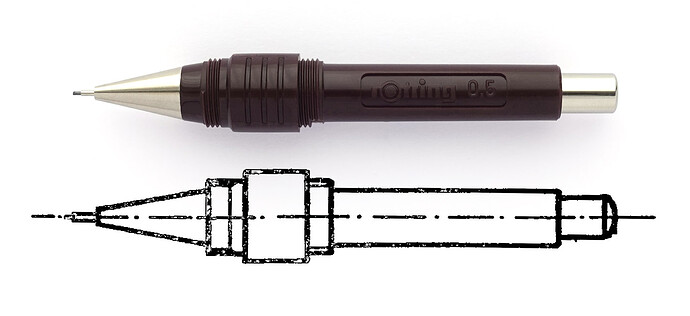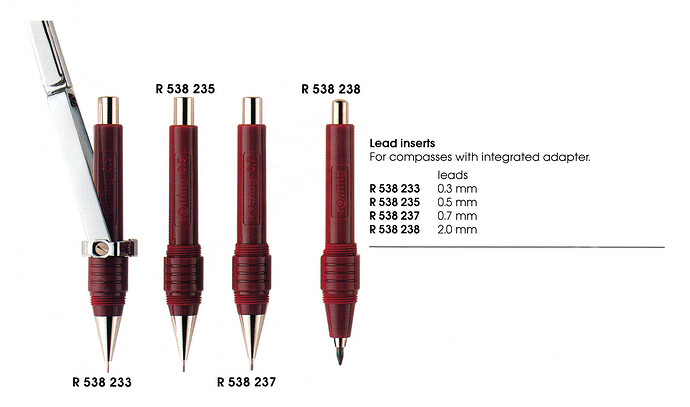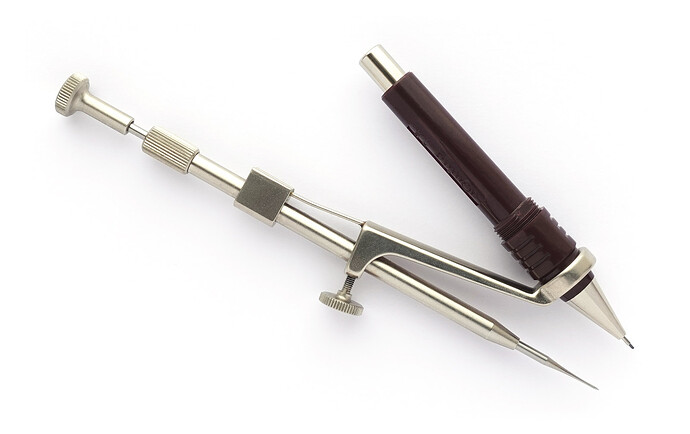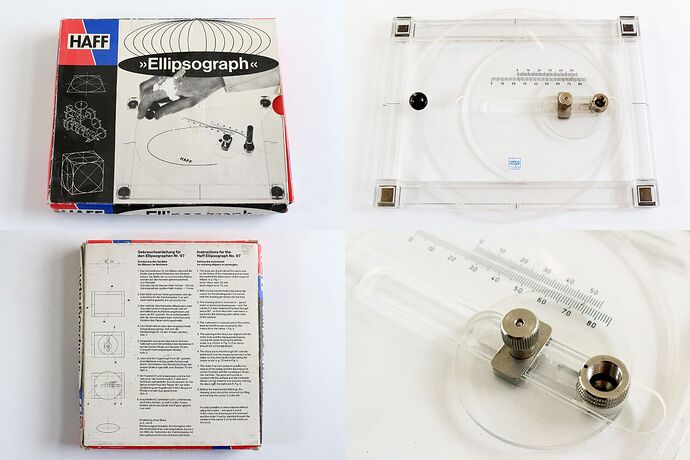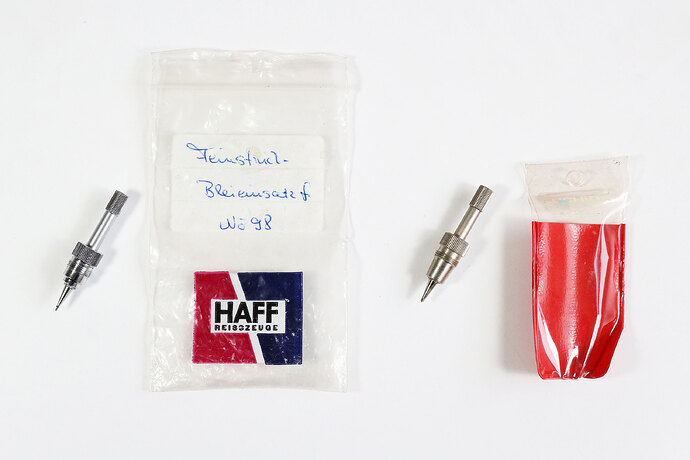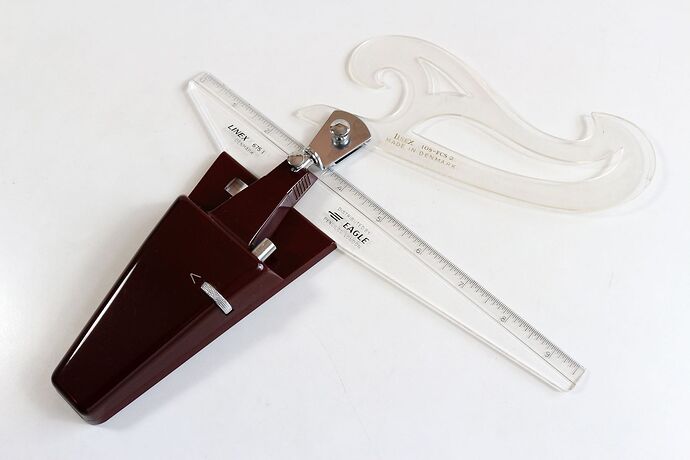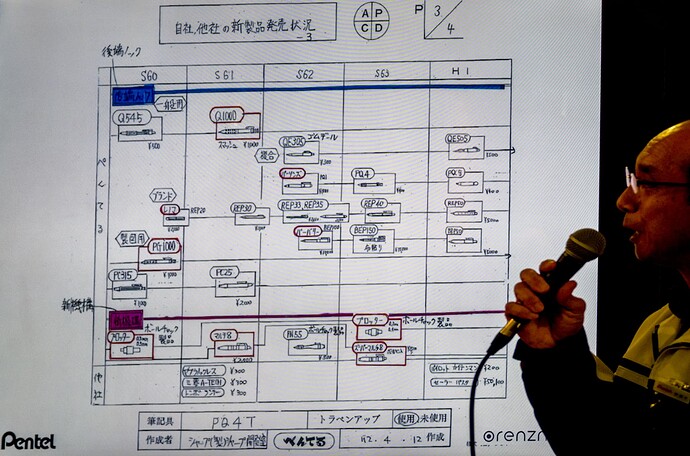When using drawing instruments such as compasses for pencil drawings, short pieces of 2 mm lead are mostly used. These are usually held in place by a clamping screw and have to be sharpened, which makes them inconvenient to use (there were also inserts where the lead piece was clamped by a sleeve, e.g. from Rotring in 1980, but these were not very practical either).
An easy-to-use alternative was registered by Dr Werner Beisel and Dipl.-Ing. Peter Gütig in November 1983 and published by the DPMA in May 1985 (the DPMA is the German patent and trademark office). The ‘drawing insert for drawing instruments’, designed as a mechanical pencil, accepts commercially available fine leads and can be screwed into the drawing pen holder of the drawing instrument.
Design as propelling pencil, mechanical pencil with push-button and mechanical pencil with push-button sleeve
An early (the first?) realisation of this idea was the Rotring R 538 23x pencil insert, which came onto the market in 1988.
The insert for three thin lead sizes and as a clutch pencil for 2 mm leads in the 1994 Rotring UK catalogue:
Here’s the Rotring R 538 235 in the STAEDTLER 556 58 drop bow compass:
However, this disclosure was not followed by the grant of a patent. The DPMA states briefly: ‘The application was withdrawn/the property right was waived’ (I would like to know more about this).
With the second thread facing the button, the pencil insert could be screwed into the barrel of a Rotring drawing pen and thus turned into a normal-length writing instrument (curiously, the disclosure document does not mention this possibility). This made the pusher inaccessible, but the solution to this problem was to come in 1987. Some will know what this solution looked like ![]()

